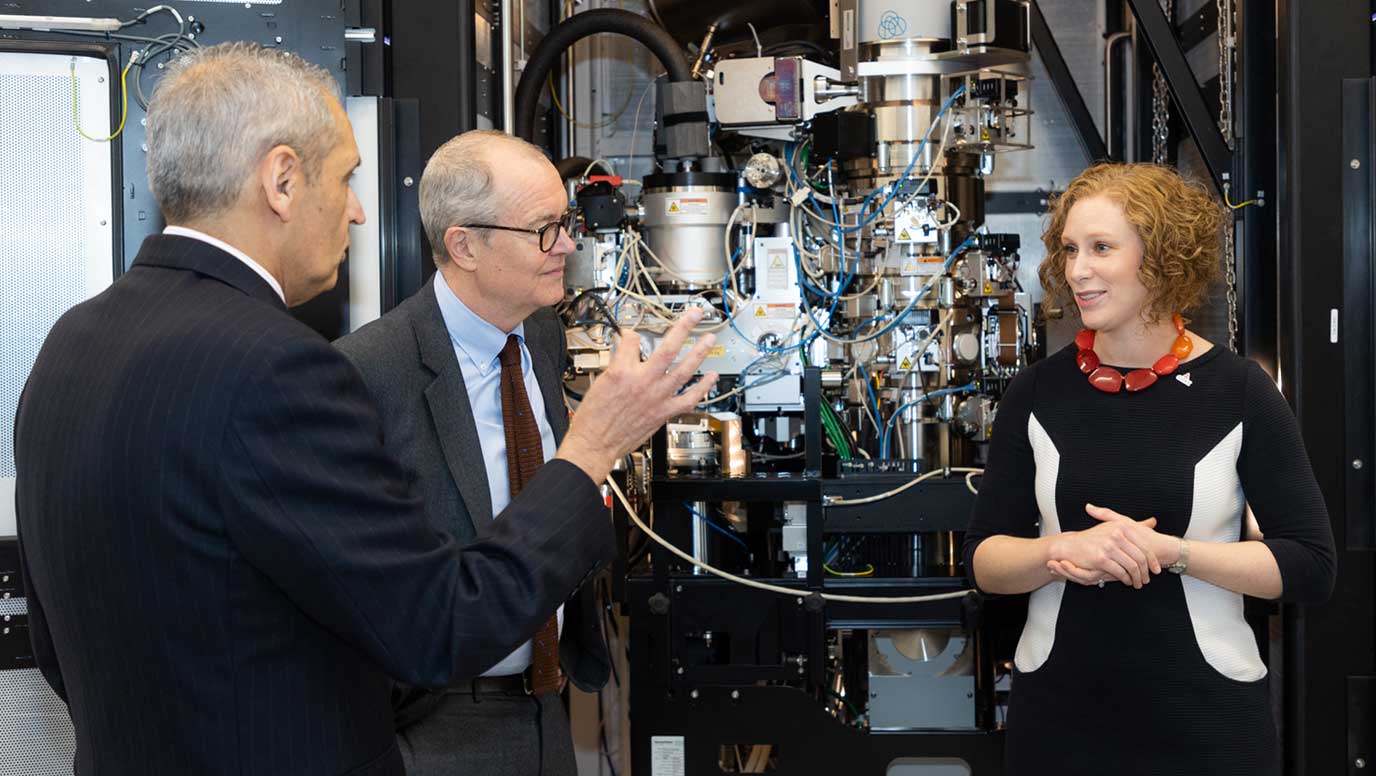Astex and Paragraf impress Science Minister Patrick Vallance

He was impressed by the global progress of tech innovator Paragraf and biotech pioneer Astex and congratulated the latter on its 25th anniversary. “Your achievements are very impressive and a great success story,” he said.
Astex is combing Cambridge as it ponders alternatives for a major new R & D headquarters. It currently operates on a split site at the Science Park.
Lord Vallance said the Oxford-Cambridge corridor was critical to the UK’s trade growth plans but stressed that co-ordinating the best of British science & technology – regardless of geographical location – was equally vital to success. He said: “We are already putting billions behind the Oxford-Cambridge region through East-West Rail, the Culham AI Growth Zone and our record-breaking backing for UK R & D.
“As significant as each of these endeavours are in isolation, we stand to achieve so much more if we coordinate our efforts, to bring this remarkable area’s strengths together to create what would undoubtedly be one of the most important innovation zones in the world.
“This is a mission that will be foundational to the decade of national renewal that this country is embarking on, by unlocking economic growth, and exciting new innovations that will boost our health and wellbeing.”
Paragraf co-founder and CEO Simon Thomas said: “Having Patrick here in Cambridgeshire gave us the opportunity to demonstrate how graphene and other 2D materials will drive the next generation of faster, more power-efficient computing.
“Realising this potential will not only fuel the UK's economic growth but also create new apprenticeships and jobs right here in Cambridgeshire. To achieve this, we need the support of the UK government, which is why we welcomed the Minister to Paragraf as part of his mission to strengthen the OxCam ecosystem of future industries”
Paragraf’s proprietary graphene deposition process was originally developed using substrate wafers of varying materials, and research scale, primarily 2” wafer sizes. These wafers are capable of producing up to 1,500 graphene Hall sensor devices, or 64 larger graphene molecular sensors, per wafer. Pilot tests of six-inch wafers have increased on wafer volume capacity to over four times these numbers.
The company’s new 43,000 sq ft Huntingdon manufacturing facility is focused on producing on six-inch wafers near term and even larger substrates in the future.
“The future of electronics lies in the adoption of advanced materials,” said Thomas. “Scaling up our production of real-world devices that are prepared to solve significant problems in quantum computing, battery management, agritech, molecular sensing and many other arenas is a major step towards realising that future in a sustainable way. And the fact that we are able to do this here in the UK means that the country stands ready to lead the advanced materials revolution.”
Lord Vallance praised Astex for pioneering potential blockbusting dugs from its Cambridge Science Park HQ.
Astex is a leader in innovative drug discovery and development, committed to the fight against cancer and diseases of the central nervous system. The company pioneered Fragment-based drug discovery, a technique now widely used in the industry, and built a rich pipeline of drugs in preclinical and clinical development.
Its partnerships with major UK research institutes and international pharmaceutical companies have led to three marketed cancer drugs that are now helping patients worldwide, namely Kisqali®, a blockbuster drug, Balversa® and Truqap®.
Astex President, CEO and co-founder, Dr. Harren Jhoti said: “We are delighted to have welcomed Patrick to Astex to celebrate our 25th year anniversary and to discuss the future for life sciences in Cambridge and the UK.
“As scientists, we hope that our discoveries will make a difference to patients and as entrepreneurs we strive to build sustainable companies to translate those discoveries into significant new medicines. The Astex team is fortunate to have achieved both goals.
“The company has also greatly benefited from the growth and development of the UK life sciences sector in the last 25 years into a leading international powerhouse and the very strong culture of innovation and entrepreneurship in Cambridge.
“Looking forward to the next 25 years, we will continue investing in the Cambridge life sciences ecosystem by establishing a brand-new R & D facility and championing open innovation and discovery through collaboration.
“Products we discover in-house and in partnership with academic partners, have the opportunity to be developed and commercialised through operating subsidiaries within the Otsuka group in the major markets worldwide and through selective strategic collaborations with pharma partners globally.”

